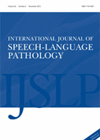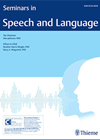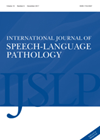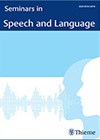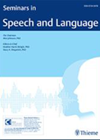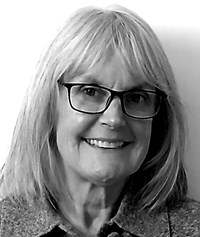
Journal Reviews
The risks of misjudging African American dialects as lesser!
Healthcare inequalities in multicultural societies, such as the UK, are becoming increasingly apparent. They arise via a complex interplay of factors, with socioeconomic deprivation, structural biases and specific cultural and biological risk factors all contributing to disparities. There is ample...
Drooling: what is it like to be unable to manage your own saliva?
Drooling in Parkinson’s is associated with less frequent and inefficient swallowing, resulting in a build-up of saliva in the mouth that then moves beyond the lips. It often causes discomfort as the skin becomes sore, and results in embarrassment. The...
The cocktail party conundrum
I feel, with slight sadness and disappointment, that a good cocktail party, dresses, punch bowls and all is not currently in its heyday and, therefore, opportunity of attending is slim. However, from what I remember, they tend to be a...
Expectations and practice
Reading this paper is reassuring. It does not appear to be groundbreaking in its results but research can be as useful, if not more so, when it consolidates knowledge and helps unify the research base. This paper focuses on those...
Let’s talk brains: review of care pathways for communication management post brain tumour
One in five people with a brain tumour have speech and language difficulties such as aphasia – a language impairment that can result in difficulties using and understanding words and sentences and participating in conversations. This paper describes a scoping...
Around the world: cultural adaptation of speech and language therapy interventions
Communication Partner Training (CPT) is a speech and language therapy approach whereby a person with an acquired communication disorder (such as a stroke, brain injury or dementia) and a close other are supported to have better conversations. Several intervention programmes...
Hot off the press: new clinically relevant research methodologies for speech and language therapy
Interpretive Description (ID) is a qualitative research framework developed to address the limitations in other qualitative methods that are not epistemologically able to take applied fields, such as clinical professions, into consideration. This framework, often described as a method, has...
Swallowing their words: translating and adapting swallowing questionnaires to other languages
Dysphagia (swallowing difficulties) is increasingly relevant given the ageing population. Yet measuring or assessing dysphagia is challenging and often costly when exploring instrumental examination. The aim of this study was to translate and validate a patient-reported swallow questionnaire; the Sydney...
Say what you don’t mean: cognitive difficulties in Parkinson’s can worsen intelligibility
Hypokinetic dysarthria, seen in 70–90% of people with Parkinson’s, causes reduced range of movement during speech production, reduced volume, rate, pitch and intelligibility. This study aimed to explore the role of higher cognitive function in speech production by asking 20...
Talk your brain well: discourse training to fortify your cognitive functioning and protect against dementia
Mild cognitive impairment (MCI) can be described as a transitional stage prior to a diagnosis of dementia. Approximately 15% of people with amnestic MCI (where memory is the leading symptom) develop dementia. Nonpharmacological interventions, specifically cognitive training, has shown some...
Swallowing the risk: managing dysphagia in aged care
The risk of dysphagia increases with age and the prevalence of dysphagia in aged care facilities is 41–52%. Dysphagia increases the risk of aspiration, asphyxiation, malnutrition, pneumonia and ultimately death. Modifying food and fluids, by providing mashed or pureed foods...
Invest in parents: motivation is key
Home practice is a key component in promoting generalisation of what is learned in speech and language therapy sessions to the real world. Yet time constraints, stress, ambivalence toward practice and increased care demands when a child has a disability...




